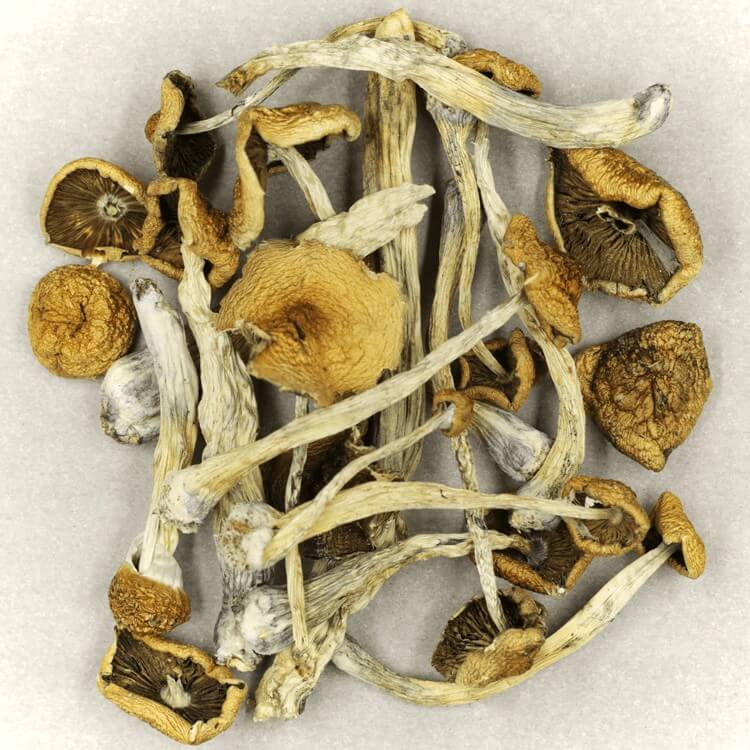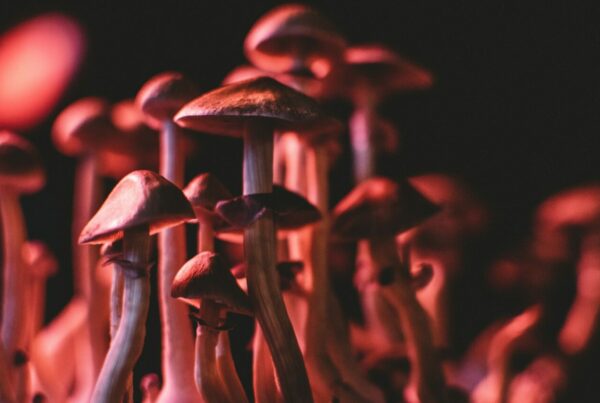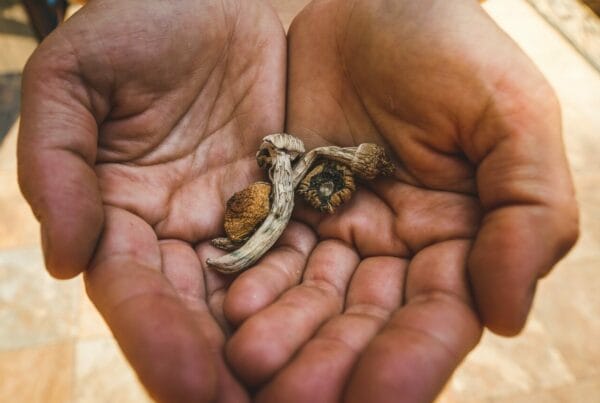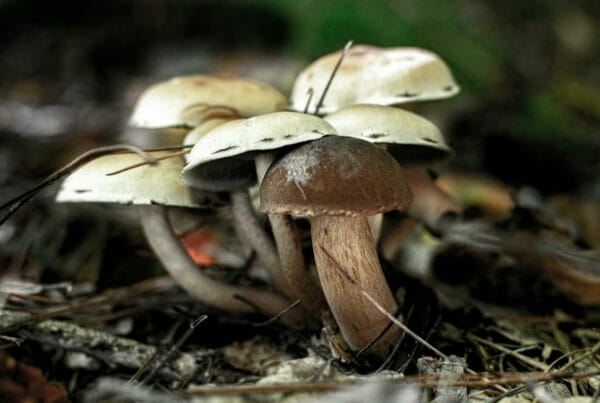Once viewed as a fanciful notion, the efficacy of Psilocybe mexicana has seen a significant shift in perception due to ongoing psilocybin research. The psychedelic research community continues to unearth its therapeutic value, leading to an increasing acceptance of it within the medical fraternity. The burgeoning potential of this field is attracting attention from experts, who are diligently working to establish safe dosage parameters for medical applications.
Key Takeaways
- Researchers are utilizing innovative techniques like liquid chromatography combined with tandem mass spectrometry to ascertain the potency of mushrooms.
- Psilocybe Mexicana, among other varieties of mushrooms, is being scrutinized in clinical trials to evaluate its potential therapeutic applications.
- Understanding the genetic diversity in magic mushrooms is crucial for formulating an accurate dosage guide.
Psychedelic Mushrooms: From Mystery to Scientific Innovation
In the past, only a few conditions were known to be alleviated by Psilocybe Cubensis. However, current research on psilocybin is shedding light on its latent medicinal properties.
Researchers are harnessing the potential of Psilocybe Mexicana along with other potent strains for exhaustive research and clinical trials. Regardless of whether the subjects are in vivo or in vitro, this strain proves to be effective in delivering the genuine effects and benefits of this fungus species.
The Emergence of Psychedelics in the Marketplace
Once shrouded in mystery, the relentless advancements and discoveries in this field are garnering growing public interest, especially among those seeking therapeutic alternatives. Conventional treatments for mental health disorders often prove inadequate, leading people to explore more effective options.
Enter the world of magic mushrooms.
Individuals suffering from mental health conditions are exploring the potential of psilocybin, evidenced to be effective in treating depression, alcohol dependency, anxiety, compulsive behaviors, tics, chronic pain, and more.
Currently, medical professionals are researching novel methods to determine the ideal dosage for safe patient administration. Most notably, a research team from the University of Texas has devised a model to extract psilocybin and psilocin concentrations.
The potency of magic mushrooms can indeed be clinically determined.
The Distinctive Traits of Mexicana
Golden Teachers, Blue Meanies, and B-Plus strains of magic mushrooms are extensively researched. However, in order to deepen our knowledge about safe usage of these mushrooms, it’s crucial that researchers delve into studying other species as well.
The Mexicana species is increasingly becoming a favored subject for research, not merely because it’s among the earliest species known, but also due to its relatively low potency which potentially meets medical drug standards.
While the Mexicana strain is less potent compared to other species, it can still offer the same impact as the more common strains. As the practice of microdosing gains traction among users, this strain emerges as an optimal choice.
This strain maintains consistent levels of psilocybin and psilocin, mirroring other strains. So, what makes it stand apart? Its historical and anthropological relevance provides the explanation.
Unveiling A Rich “Mexican” Legacy
In ancient times, psilocybe mexicana naturally proliferated in moss. These psilocybin mushrooms were highly esteemed by indigenous communities for their diverse applications, often associated with mystical or otherworldly occurrences.
Let’s focus on Mexican mushrooms. More than 2000 years ago, the earliest documented usage of these mushrooms was by the indigenous people of North and Central America. The Aztecs, a primitive ethnic group, referred to these mushrooms as the “food of the Gods,” or “teonanácatl” in their local dialect.
If the Aztecs were present today, they would attest to the transformative, emotionally potent, and mentally stabilizing effects of the Mexicana, even without comprehending these contemporary terms.
Despite different cultivation techniques, this mushroom has preserved its natural psilocybin concentrations, which is a testament to its authenticity. This authenticity is a universally recognized standard that is greatly appreciated by researchers and psychedelic research institutions.
Innovative Strategies for Psilocybin Content and Potency Testing
A team of ten researchers from the University of Texas at Arlington, along with other research institutions, have come up with a novel method to test the potency of psychoactive compounds in mushrooms. This new approach merges liquid chromatography and tandem mass spectrometry.
Here are two groundbreaking techniques:
- Liquid chromatography is a technique utilized to separate and examine chemical compounds. Its application in this context is to identify active substances in mushrooms. This procedure entails running a liquid specimen through a column packed with a solid substance, known as the stationary phase. The varying interactions of the chemicals in the sample with the stationary and mobile phases lead to their distinct rates of separation as they travel through the column.
- Spectrometry is typically involved with studying the interaction between matter and electromagnetic radiation over a spectrum of wavelengths. It identifies and quantifies substances by the specific wavelengths of light that the molecules absorb and deflect. This makes it possible to analyze the electronic, vibrational, and rotational states of the chemical.
This method was utilized on five varieties of magic mushrooms. The research identified that the average total levels of psilocybin and psilocin in these varieties ranged from 0.879 to 1.36. These concentrations exceeded those found in many other strains, such as Bull Run and Cambodian. The researchers validated the findings of their study by comparing their results with data from other independent laboratories.
The congruity between the results of the two laboratories reinforced the credibility of their experimental sequence in precisely determining the potency of the mushrooms.
If validated by subject matter experts, this could add a new spectrum of techniques to the existing methods of testing psychedelic strength, acting as an extra safety measure to avoid incorrect dosage calculations.
Extension of Research to Additional Species
Conducting research on further species is advantageous. It can deepen our comprehension of the health benefits linked with diverse strains and provide fundamental data on the impacts of less potent mushrooms.
Moreover, it can assist in informing individuals about the effects of different dosages on the psychedelic experience. By contrasting the Mexicans with more potent strains like Psilocybe Cubensis, researchers can ascertain how diverse concentrations of active compounds can shape therapeutic results.
For example, the Blue Meanies strain generates more powerful hallucinogenic impacts, which could potentially be effective in managing conditions like depression. Conversely, the latter is more suited for microdosing or subtle uses such as mood enhancement or focus improvement.
Genetic Diversity Facilitates Safer Treatments
It’s less known that different cultivars or varieties feature unique genetic profiles and differ in potency, chemical composition, and resulting effects. This diversity permits healthcare practitioners to select the most suitable variant for specific medical purposes and adapt doses according to individual requirements, thereby reducing potential risks and maximizing benefits.
Take, for instance, Psilocybe Semilanceata (Liberty Caps) or Psilocybe cyanescens. These species have distinctive alkaloid profiles that can potentially be effective in managing anxiety. On the other hand, other synthetically grown mushrooms might be more apt for addressing substance addiction or compulsive behaviors. This diversity enables the development of personalized treatments with enhanced safety and efficacy.
From this, we can infer that the genetic diversity in hallucinogenic mushrooms, combined with innovative methods for potency assessment and identification, is vital for generating safer medical treatments.
Enhanced Safety in Medical Applications
Let’s pause to consider the implications of safer dosage determination.
- Decreased risk of overdosing: With accurate dosage determination, users can avoid the risk of overdosing. This also suggests that product labels should be made clearer to avoid consumer misunderstanding.
- Improved predictability: With precise dosage, users can better anticipate the effects or experiences they might encounter during their trips. This can lower the occurrence of overwhelming sensations and anxiety, thus contributing to patient satisfaction.
- Uniform measurement: Accurate dosing can endorse a standardized metric, enabling people to easily refer to charts for potential effects.
Enjoy the Advantages of Accurately-dosed Shrooms through Advanced Potency Tests | Buy Magic Mushrooms Online at Mushroom Gummies Canada
If these two pioneering techniques continue, you won’t have to deal with unpredictable effects. Combine this with smart online shopping at Mushroom Gummies Canada. We offer dried mushrooms that promise a serene, relaxing psychedelic journey without excessive psychoactivity. Buy psychedelics online in Canada via Mushroom Gummies Canada.
Frequently Asked Questions
Are Big Mexicans and Psilocybe Cubensis the same?
No, Big Mexicans and Psilocybe Cubensis are distinct mushroom strains, so it’s crucial to distinguish between them. Big Mexicans exhibit a higher compound concentration, ranging from 0.5% to 1%, making them significantly more potent.
Psilocybe Cubensis and Mexican mushrooms aren’t the same; they differ notably in their physical characteristics. The former usually sports a bell-shaped cap, while the latter often exhibits a conical cap.
What’s the highest concentration of psilocybin in Mexican mushrooms?
The concentrations of both psilocybin and psilocin in Mexican mushrooms can climb to a maximum of 0.25%. This concentration is quite low, similar to the Golden Teacher mushroom strain. However, even at these levels, they can induce profound psychedelic experiences, which may have potential therapeutic benefits.
What constitutes a medically safe dosage?
Generally, a safe dosage ranges from 1 to 2 grams. However, this is subject to variables such as the method of consumption, the metabolism rate of the individual, and the specific strain’s potency. Some individuals opt to ingest sub-threshold doses between 0.05 (50mg) and 0.025 grams (250mg) as a strategy to mitigate the psychedelic effects.





